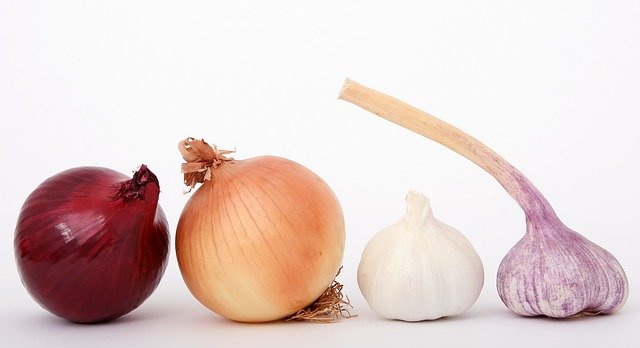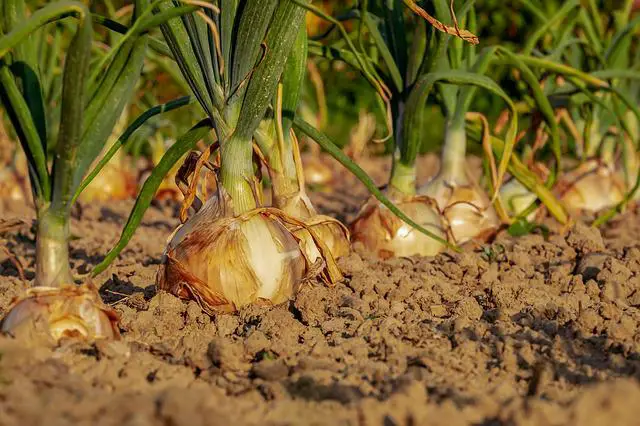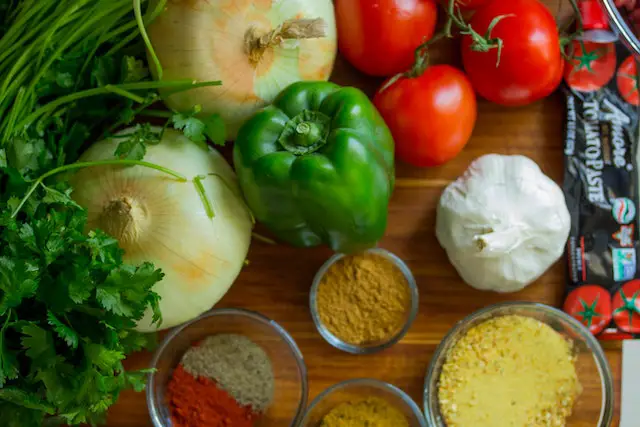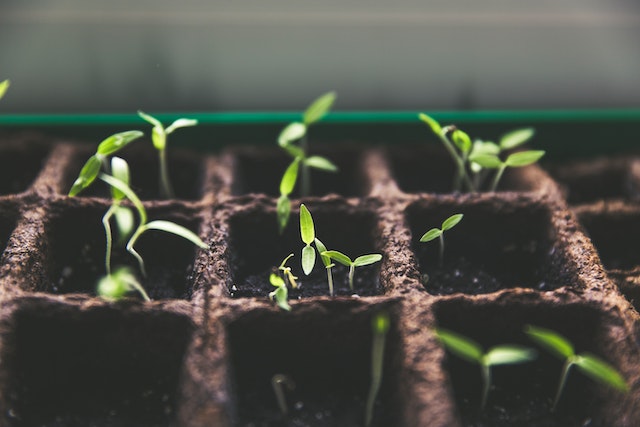In many parts of the world, onions are commonly used for different purposes, especially in cooking meals. They are one of the most popular root vegetables because of their taste, flavor and rich nutrients.
Perhaps you want to plant onions in your garden, you might be wondering if they grow above the ground or underground.
Onions are rich in essential nutrients that help to boost the immune system and maintain cholesterol levels. This is one of the reasons people all over the world include them in their diets.
Generally, most root vegetables do grow below the ground. But do onions grow underground too?
Do Onions Grow Underground?

Yes, the onion bulb grows under the ground while the tops grow above ground. Being biennial plants, onions complete their life cycle in two seasons. They form bulbs underground in the first season and produce flowers and seeds in the second season.
While there are different varieties of onions, only a few of them are available for sale commercially. In this article, we will discuss the different types of onions, how to grow onions, and more.
Read further to learn!
How Do You Grow Onions Underground?
When preparing to grow onion seedlings or bulbs, it is important to examine the soil you want to use. Make sure the soil drains well and contains the right amount of nutrients. It should be rich in organic matter, contain nitrogen, and be moderately acidic.
If there aren’t enough nutrients in the soil, add fertilizer or organic matter to it. This will help your onions grow healthily.
Now, follow these simple steps to plant your onions:
- Choose a place with direct sunlight to plant the onions. When the onions get enough energy from the sun, they’ll produce large bulbs.
- Make furrows in the soil about 1.5 inches deep and 1.5 feet long in rows.
- Separate the onion bulbs by 3 inches and place them in the furrows.
- Cover the onion bulbs with soil but allow the tops to protrude out of the soil surface. Make sure the onion bulbs are not too deep in the soil to allow them to develop well.
- In moderation, water the onions to keep the soil moist. Avoid over-watering or under-watering the soil.
- Pull out all the weeds around the soil to prevent them from sharing nutrients with the onions.
- Apply fertilizer to the onion plants when they have about 6 leaves to increase their yield.
- Get rid of insects as soon as you notice them on the onion leaves.
- When the onion tops begin to fall and turn yellow, it means you can harvest them.
Different Types Of Onions

There are quite a number of commercial varieties of onions. We’ll be describing 7 of them:
1. Spring Onions
Spring onions, commonly known as scallions or green onions, contain lots of nutrients. They are young onions that were harvested before their bulbs developed fully.
Scallions have a milder taste than regular onions and are a favorite ingredient among the Chinese. In addition, the spring onions’ white bulbs and leafy parts are safe to eat.
2. Red Onions
Commonly called purple onions, red onions are flavorful and colorful. They have a strong and sweet aroma, which is why people add them to meals.
Red onions taste amazing when eaten raw or lightly cooked with other meals. Since the red onions are pungent, most people soak them in cool water. After some time, they drain the water off to make the onions taste milder.
3. White Onions
Apart from being a special ingredient in meals, white onions have medicinal properties. They contain antibiotic and anti-inflammatory properties that help to keep the body healthy.
White onions contain high sugar and little sulfur, the same as red onions. They are also flavorful and can be eaten in raw or cooked form.
4. Yellow Onions
Another name for the yellow onions is brown onions. There’s no doubt that yellow onions are a favorite among Americans. Most of the onions grown in the United States are yellow, which is one of the reasons they are popular.
Besides, onions have a mild flavor and are usually tasteful when added to diets.
5. Pearl Onions

Pearl onions, also known as button onions, are the onions that did not mature before being harvested. They are usually small and more flavorful than regular onions. However, peeling these onions can be a huge task when you don’t use the right tools.
Most people often buy the ones that have been peeled or frozen.
6. Sweet Onions
When compared to yellow, red, and white onions, sweet onions contain more water and little sulfur. It’s no wonder the onions do not have a sharp taste or smell like the other varieties. Sweet onions are rich in essential nutrients such as vitamin C, fiber, folate, and chromium.
7. Shallots
Shallots are similar to garlic in certain ways, but they are a variety of onions. They are small and have several lobes on their bulbs. Shallots are also pungent, which is probably the reason people don’t use them like the other varieties.
In South India, shallots are known as “small onions” and are commonly used as a major ingredient for meals there.
When Is the Best Time To Plant Onions?

Being hardy plants, onions will mostly thrive any time you plant them. However, during the early stage of growth, onions prefer a cool environment. Therefore, it is better to plant them during early spring to harvest them in early summer.
But if you live in an environment with a mild winter, it is better to plant your onions in the fall.
Learn more about onions: How Many Onions Grow From One Bulb
Final Thoughts
Onions give life to meals, which is a major reason why they are popular all over the world. Apart from that, they contain lots of nutrients that offer a wide range of benefits to humans.
Onions are also easy to grow and care for, even for beginners.
Now that you know that onions do grow underground, you may want to plant a few of them in your garden. Remember to choose a place with bright sunlight, provide the soil with fertilizers, and water it moderately. Within a short time, you should harvest several healthy, large onion bulbs!
Frequently Asked Questions
Where Do Onions Grow?
Surprisingly, onions can grow everywhere you plant them. Presently, there are over 400 species of onions across the world. Since they are hardy root vegetables, you can grow onions easily from other bulbs, seeds, or sets.
How Long Does It Take For Onions To Grow In The Ground?
It takes about 3 to 4 months for onions to reach maturity. While you can plant your onions from sets or plants, you can also grow them from seeds. Most of the time, you can harvest the green onions you grow from sets at one month and two weeks approximately.
Can Onions Be Grown in Pots?
Yes, you can grow onions in a pot successfully. However, you’ll have to choose the appropriate pot to plant the onions in, depending on their variety. Ideally, you’ll need a large pot that’s about 10 inches deep and 8 inches in diameter to allow the roots to grow perfectly.
And if you’re considering planting many onions in a single pot, make sure the pot is large enough to accommodate each onion conveniently.

Hey, I’m Lisa and I’ve been an avid gardener for over 30 years. I love writing, talking and living in the garden! Feel free to connect with me on my socials below

